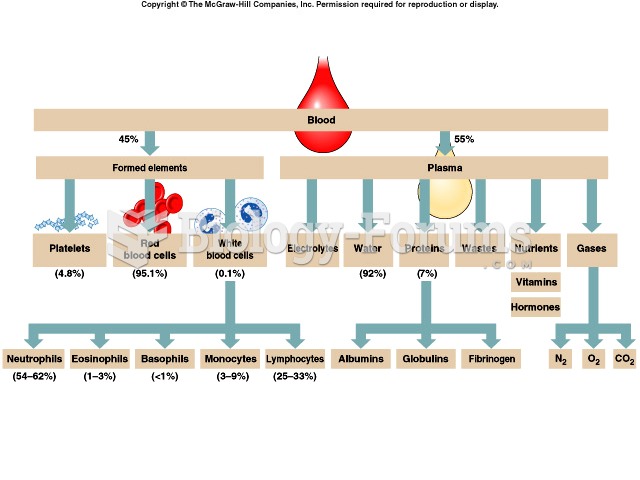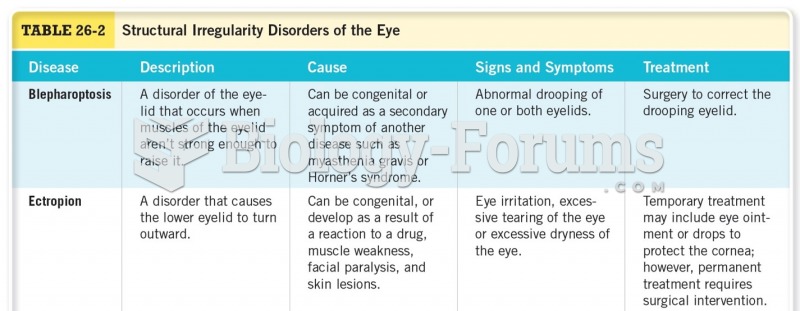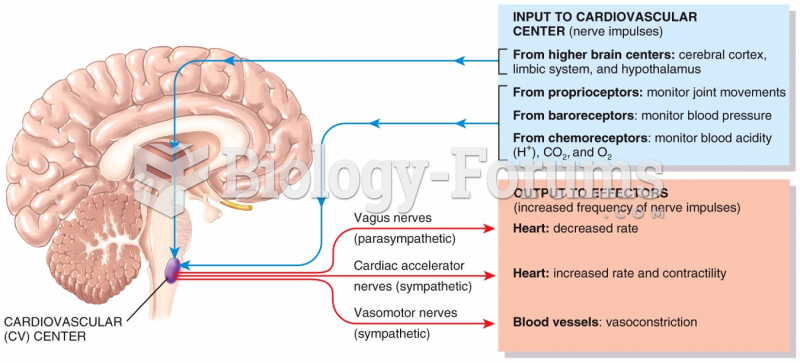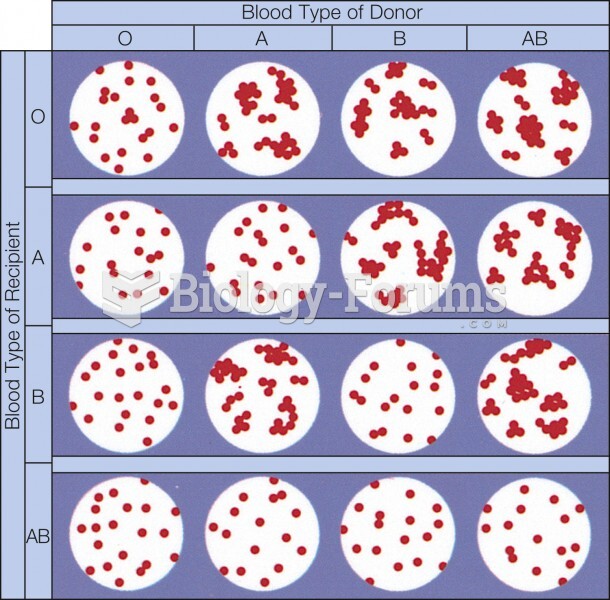This topic contains a solution. Click here to go to the answer
|
|
|
Did you know?
Each year in the United States, there are approximately six million pregnancies. This means that at any one time, about 4% of women in the United States are pregnant.
Did you know?
It is difficult to obtain enough calcium without consuming milk or other dairy foods.
Did you know?
If all the neurons in the human body were lined up, they would stretch more than 600 miles.
Did you know?
Liver spots have nothing whatsoever to do with the liver. They are a type of freckles commonly seen in older adults who have been out in the sun without sufficient sunscreen.
Did you know?
On average, someone in the United States has a stroke about every 40 seconds. This is about 795,000 people per year.







